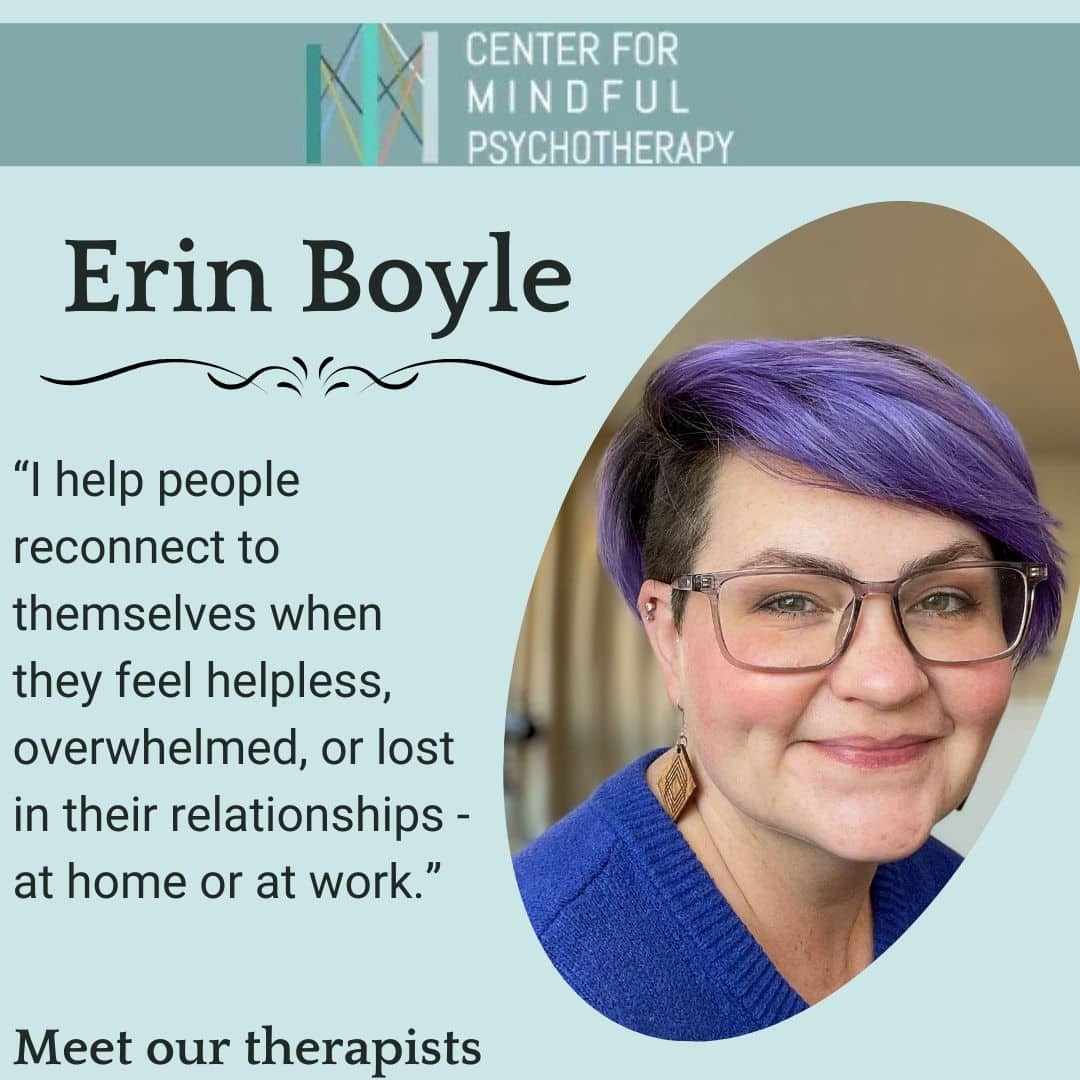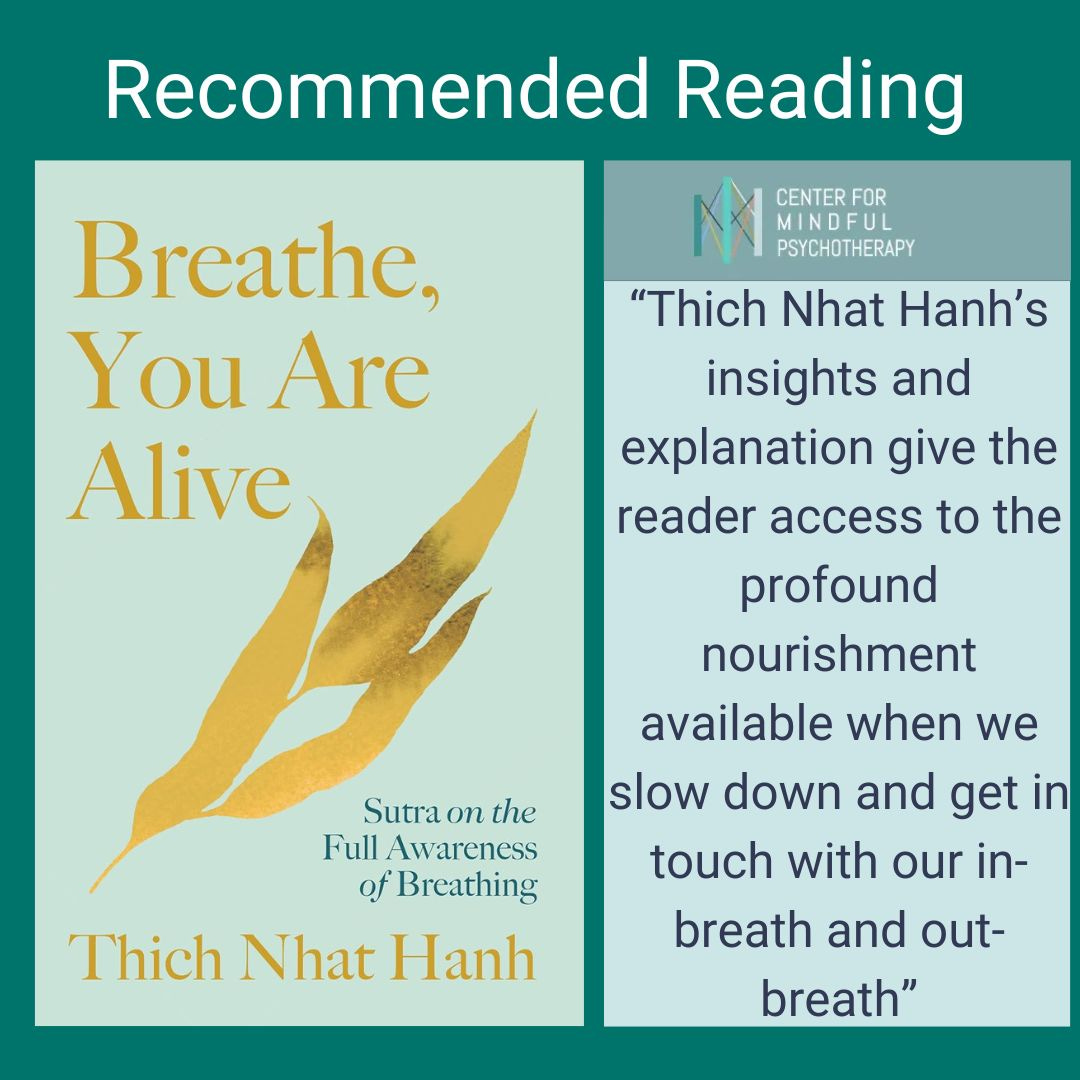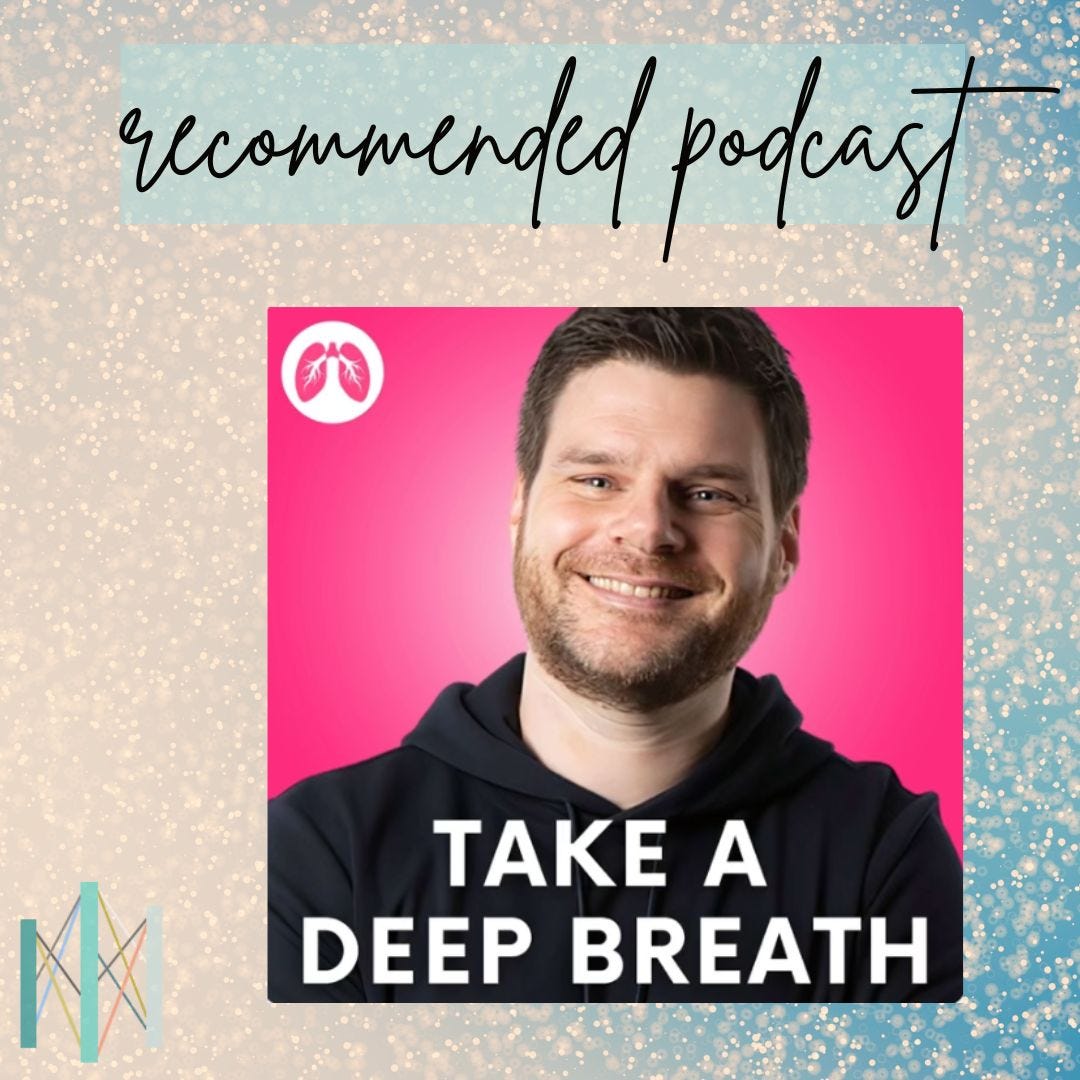Center for Mindful Psychotherapy, February 2025 Newsletter
Your monthly newsletter from our non-profit collective of ~100 Associate Marriage and Family Therapists in the San Francisco Bay Area
Bringing You A Moment of Mindfulness
Welcome back to your monthly newsletter. We invite you to pause. Before reading ahead, take a deep breath in through your nose. Feel the air fill your lungs, expanding your ribs. Hold for a moment, then exhale slowly, feeling yourself settle. Let yourself land here.
So many of us feel the weight of the world on our shoulders right now. There is urgency in the air - a call to act, to care, to do more. And yet, there is a paradox: sometimes the most meaningful action is to simply sit and breathe.
This month, we explore the radical power of breath. In moments of overwhelm, breath is our anchor. It is the most basic and reliable way to return to ourselves. Whether you are in motion or stillness, breath reminds us: we are here, we are alive, and that is enough. That is the start of everything.
Thank you for joining us in this space.
The Breath as Resistance: Finding Power in Stillness
It may seem counterintuitive, but in a world that demands urgency, pausing to breathe can be a radical act of self-preservation. There are times when urgency is necessary - times to speak up, to show up, to engage deeply with the world’s needs. But we cannot do this sustainably without moments of replenishment.
Breathing is not just about survival; it is about release. When we exhale fully, we are not just letting go of air - we are letting go of tension, of tightness, of the weight we may not even realize we are carrying. How often do you catch yourself holding your breath when you’re anxious or bracing yourself in the midst of stress? The simple act of exhaling is a reminder that release is possible, that you do not have to hold everything all at once.
Breath is also a reminder that stillness is not the same as inaction. Taking a deep breath before responding can create space for clarity. Slowing down the breath can shift us from reactivity to intention. It is in these moments of pause that we ground ourselves, creating the steadiness we need to move forward with more power, purpose, and resilience.
Collective Breathing
When we breathe together, we are reminded that we are not alone. Whether it is the collective inhale before a group meditation, the deep grounding breaths of a protest, or the synchronized rhythm of breath in a room full of people finding silence together, shared breathing fosters connection. There is something profoundly unspoken yet deeply understood about breathing in sync with others—it is an act of unity, a reminder that even in our individual experiences, we are tethered to something greater.
In movements for justice, breath becomes the steady rhythm beneath the chants, the pause before the next surge of energy. In moments of shared grief, breath is the silence that allows emotions to settle and be held by those around us. In a therapy room, a yoga class, or a simple gathering of friends, a shared breath can create a space of presence, of safety, of being seen and heard without words.
Breathing is a right, a need, a quiet form of resistance against burnout, against depletion, against a system that tells us we must constantly produce in order to be worthy. It is an act of reclaiming presence in a world that pulls us away from it.
So, as you move through this month, consider: How often are you allowing yourself to fully exhale? What would it mean to pause before reacting? Where can you carve out moments to simply be with your breath?
Grief is a natural and necessary part of healing, no matter what kind of loss you've experienced. It’s okay to feel sad, angry, confused, or even numb—these emotions are all valid. Like the breath, grief moves in waves—sometimes heavy, sometimes light, sometimes barely perceptible, yet always present.
Give yourself permission to feel and express your emotions without judgment. There's no "right" way to grieve, no set timeline. Just as the breath cannot be forced, neither can the process of healing. Instead, allow it to unfold at its own pace.
When grief feels overwhelming, return to your breath. Let each inhale remind you that you are still here, still moving through this experience. Let each exhale be a release—of tension, of expectation, of whatever no longer serves you in that moment.
Be gentle with yourself during this time, and remember: it’s okay to not be okay. Just keep breathing.
The Role of Breathing in Therapy
Breathing is often seen as something automatic, something we do without thinking. But in therapy, breath is much more than just a biological function—it is a tool for awareness, regulation, and transformation. Whether used to manage anxiety, process trauma, or deepen mindfulness, breathwork plays a powerful role in the healing process.
Breath as an Anchor: Why Therapists Focus on Breathing
Many therapy modalities incorporate intentional breathing as a way to help clients regulate their emotions and connect with their bodies. When we experience stress, fear, or emotional overwhelm, our breath often becomes shallow, fast, or even held unconsciously. This physiological response keeps us in a heightened state of fight-or-flight, reinforcing patterns of tension and distress.
By bringing awareness to the breath and intentionally slowing it down, we signal to the nervous system that we are safe, shifting from the sympathetic nervous system (stress response) to the parasympathetic nervous system (rest and digest). This shift helps reduce anxiety, lower heart rate, and create a sense of calm and presence.
Therapists often use breath as a grounding technique, encouraging clients to return to the here and now when they feel overwhelmed. It acts as an anchor, something steady and reliable in moments of uncertainty.
Breath in Different Therapeutic Approaches
Breathing techniques are incorporated into many therapeutic modalities, each using breath in a way that aligns with its particular philosophy and goals:
Mindfulness-Based Therapy: In mindfulness practices, breath is used as a focal point, helping individuals stay present rather than lost in rumination or worry. Meditation, body scans, and mindful breathing exercises are common tools.
Somatic Therapy: Approaches like Hakomi Therapy, Sensorimotor Psychotherapy, and Somatic Experiencing use breath to help clients access body awareness, process trauma, and release tension stored in the body.
Cognitive Behavioral Therapy (CBT) & Dialectical Behavior Therapy (DBT): Breathing exercises are often taught as coping strategies to manage anxiety, panic attacks, and emotional dysregulation.
Trauma Therapy: Modalities like Eye Movement Desensitization and Reprocessing (EMDR) use breath to help stabilize clients before and after processing distressing memories.
Breathing as a Path to Emotional Release
Breath is not just about relaxation—it is also a pathway for emotional processing. Have you ever noticed how your breath changes when you cry deeply, feel fear, or experience joy? Our breath mirrors our emotional states, and through conscious breathwork, we can invite emotions to move through us rather than getting stuck.
In therapy, this might look like:
A client using deep exhalations to release built-up tension from suppressed anger.
A therapist guiding a client to breathe into a painful memory, helping them process it rather than avoid it.
Someone using breath to co-regulate with another person—breathing in sync with a therapist, a partner, or a group to cultivate a sense of safety and connection.
Breath as a Tool for Empowerment
One of the most profound aspects of breathwork in therapy is its accessibility. Unlike medications or external interventions, breath is something we carry with us at all times. Learning to work with the breath empowers individuals to regulate their emotions, calm their nervous systems, and cultivate resilience in any moment, no matter where they are.
Breath reminds us that healing does not always come from outside ourselves—it is something we can tap into from within.
Meet Our Therapists
Our featured Associate Therapist of the month is Erin Boyle, a trauma-informed relational therapist who pulls from somatic, psychodynamic, and gestalt modalities.
You can learn more about working with Erin on her profile page.
Learn even more and get a sense of who she is and how she works from this interview.
Discover a book that she recommends in her Divergent Mind review.
Check out her guest blog post: From Mind vs. Body to Mind and Body
Signal Breaths Guided Exercise
Erin Boyle teaches us how to use signal breaths in three different ways in this guided video:
Erin also has a great guided video on an Introduction to Tapping over on her website.
Online Support Group for Unemployed Californians in Tech
What is Mindfulness Therapy?
At the Center for Mindful Psychotherapy, mindfulness is more than just a practice—it’s a foundational approach that informs much of the work we do. Mindfulness Therapy helps individuals develop present-moment awareness, bringing a sense of calm, clarity, and self-compassion into their daily lives. But what exactly does mindfulness therapy look like in practice?
Mindfulness in Therapy: A Present-Moment Approach
Mindfulness is the practice of bringing gentle, non-judgmental awareness to the present moment. It teaches individuals to observe their thoughts, emotions, and bodily sensations without automatically reacting to them. In therapy, this approach is used to help clients reduce stress, manage anxiety, and develop emotional resilience.
Unlike traditional talk therapy, which often focuses on past experiences or future concerns, mindfulness therapy helps clients cultivate awareness of the here and now. This shift in focus can be particularly helpful for individuals struggling with rumination, worry, or emotional dysregulation.
You Might Like This Therapy If …
✔ You want to feel more present and less overwhelmed by stress.
✔ You struggle with rumination or racing thoughts.
✔ You’re looking for tools to regulate emotions and reduce anxiety.
✔ You want to improve self-compassion and acceptance.
✔ You’re drawn to practices like breathwork, meditation, or body awareness.
✔ You want a therapy that supports calm, clarity, and intentionality in daily life.
Learn more about mindfulness therapy here.
More Reading on Mindfulness
Recommendations
This month’s recommendations:
Music is the Medicine
This month’s music share is:



















Thank you so much for including a link to my poem in your post!